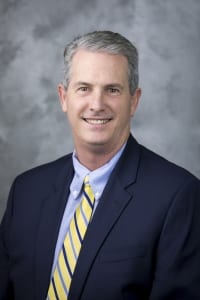The coronavirus pandemic has impacted many important events this year. Public health concerns forced organizers of graduations, weddings and birthday parties — even the 2020 Olympics — to cancel or postpone to later dates.
Electric cooperatives across the state have even made the difficult decisions to alter their annual meetings earlier this year.
Each October, our nation’s cooperatives recognize National Co-op Month. While this is a relatively insignificant celebration and certainly a poor substitute for other meaningful events, I propose that Co-op Month holds greater significance this year than ever before. Here’s why:
Co-ops exist to serve.
Co-ops are built to solve a problem, not make a profit. Members of our communities needed power, so they built electric cooperatives to bring electricity to places that other power companies refused to serve. Even today, we continue this mission to serve our communities, neighbors and friends.
Co-ops bring people together.
Whether it is an agriculture co-op, a power co-op or a credit union, all cooperatives share the fundamental notion that people can accomplish more when they work together.
Tennessee’s electric cooperatives will use Co-op Month to recognize the hard work of our employees throughout this challenging time, and we invite you to join us by seeking out opportunities to serve others in your community.
As the coronavirus pandemic impacts our nation’s health and economy and a divisive presidential election highlights some of our greatest challenges, the co-op principles of service and unity seem to hold special significance this year.
Tennessee’s electric cooperatives will use Co-op Month to recognize the hard work of our employees throughout this challenging time, and we invite you to join us by seeking out opportunities to serve others in your community.
Even if you don’t celebrate Co-op Month, I hope you and your family can find something to celebrate. Maybe one of your kids made a good grade or mastered a new skill. Maybe you or someone you love received some good health news. Maybe you just found a dollar bill on the sidewalk.
It has been a difficult year, and we all need a reason to celebrate, regardless of how small it may be. Celebrations are moments of hope, and hope reminds us that brighter days lie ahead.



